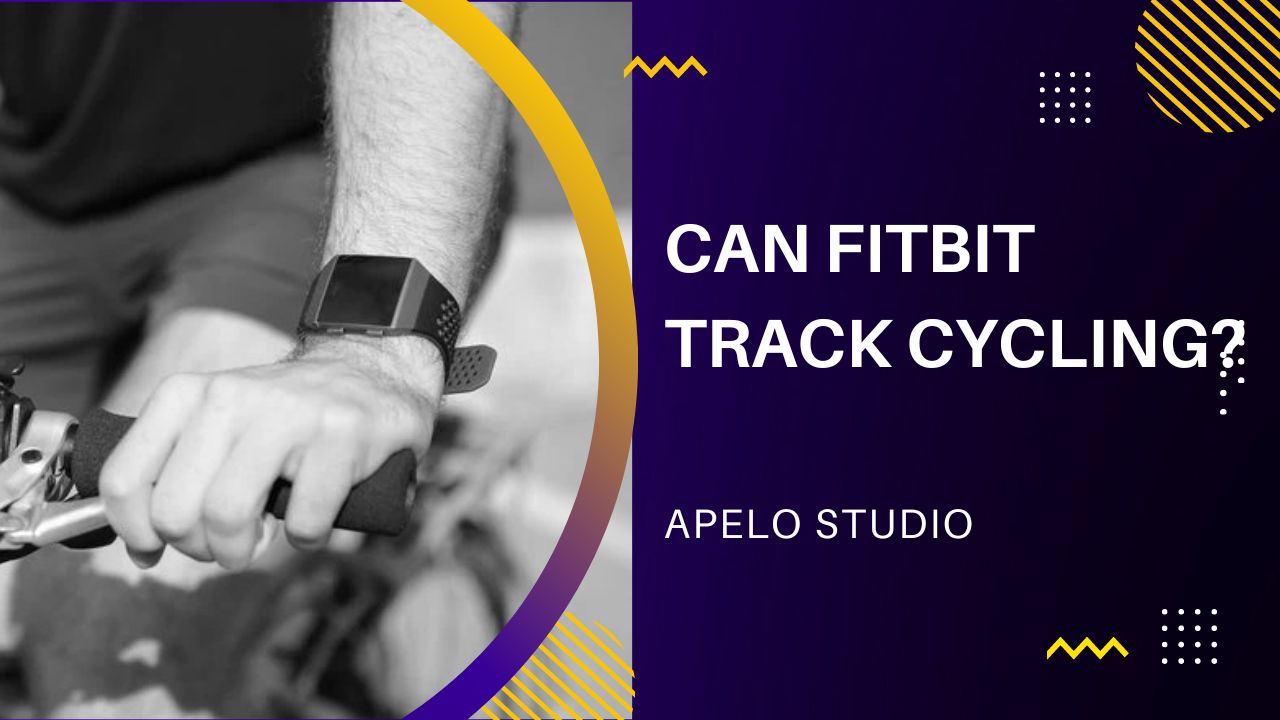You can use a Fitbit fitness tracker or smartwatch to track cycling exercises. These devices use SmartTrack to automatically detect and log bike rides and GPS to measure pace, elevation, route, distance, and total time spent biking.
What I love about Fitbit when it comes to bike rides is its ability to records metrics such as average speed, calories burned, and distance covered, and then syncing these stats in a clean, readable presentation in the Fitbit app.
The cycling information in the Fitbit app is clear and easy to understand. In multiple instances, my biking stats have encouraged me to ride further, move faster, and aim higher on my cycling goals.
How Does Fitbit Track Cycling?
A Fitbit uses SmartTrack and connected or built-in GPS to monitor bike rides.
Because Fitbit counts steps based on the motion of your arms and your body swings, consider setting your activity log to swinging.
Every Fitbit is but a basic cycling watch. My Fitbit Versa 4 records my heart rate, GPS, and speed as I bike, but it doesn’t give me the option to connect it to third-party sensors such as cadence, power, or speed.
SmartTrack
In the early days of Fitbit, you first had to log bike rides manually in the Fitbit app before hopping onto your bicycle. Otherwise, Fitbit wouldn’t know whether you were cycling in the first place.
The introduction of SmartTrack changed how Fitbit fitness trackers and smartwatches monitor workouts. Ideally, SmartTrack automatically detects and logs the type of high-movement exercises, including cycling.
It takes anywhere from 60 seconds to 15 minutes for SmartTrackto recognize any type of an activity. Accordingly, I’ve had to keep cycling for at least have that time for Fitbit to detect that I’m on a bike.
Connected or Built-in GPS
GPSequally contributes to the device’s ability to track bike rides. Ideally, the GPS measures calories, pace, elevation, distance, average speed, and time as you ride your bike.
To put this into perspective, the Fitbit GPS allows me to map my routes before I head out for a biking binge. This keeps me on track so that I don’t lose my way in unfamiliar places. Access to different speeds over the same route allows me to do an easy comparison on how fast I cycle over time.
What’s the Best Fitbit for Cycling?
The best Fitbit for cycling is any model that features SmartTrack and onboard GPS. Trackers and smartwatches with connected GPS are equally good, but you should consider them only if you don’t mind bringing your smartphone with you.
Get yourself a Fitbit Sense 2 if you’re looking for recommendations. This model features an onboard GPS, supports SmartTrack, has a decent battery life, and monitors stress levels when cycling.
Once the SmartTrack has detected your activity after 15 minutes of cycling, the built-in GPS will monitor and log your route, distance traveled, pace and elevations climbed as you bike.
The battery lasts at most 4 days on a single charge, but this comes down to about 5 hours in GPS mode.
In addition to mapping your route as you ride your bike, Fitbit Sense to checks your stress level based on your current heart rate and cycling intensity. The data output enables you to reflect and see the connection between your overall score and how you feel.
Why Won’t My Fitbit Track My Bike Rides?
One of the most common Fitbit problems is not being able to use a Fitbit smartwatch or fitness tracker to track bike rides. It happens because the built-in GPS is off or a system glitch that causes SmartTrack to not detect motion.
To fix this:
Enable onboard GPS
If you have a Fitbit Sense 2, swipe the display twice to the right to access the exercise tile. Choose an exercise, press the power button and tap end. Scroll down and tap Start New. Choose an exercise, scroll all the way down to GPS, and toggle to enable built-in GPS.
Log Cycling Manually
Log in to your Fitbit dashboard. Click “Log” and then select “Activities”. Scroll to the bottom, enter “Cycling”, and then provide the required information.

